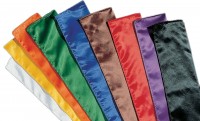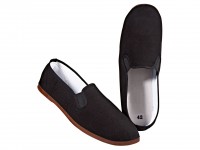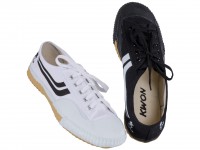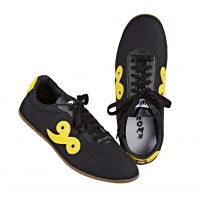About Kung Fu, Wu Shu, Tai Chi, Qi Gong Combat Sports Shop
The concept of Kung Fu does not label one single type of combat sports but stands for different martial arts which were developed by the monks of a Shaolin cloister more than 1.500 years ago. Translated into German, Kung Fu means as much as, "something achieved by hard/patient work"; thus, in earlier times the term stood for an acquired degree in the art of fighting than for the art itself. In China Kung Fu is also called Wushu.
Traditionally, the five elements play a very important role in Kung Fu. These are wood, fire, earth, metal and water, which are embodied by a certain fight device each. So the stick stands for wood, the spear for fire, the human fist for earth, the sabre for metal and the sword for the element water. A special value is placed on Kung Fu pupils acquiring the skills discipline, resilience, patience and will-power.
In Germany too, the concept of Kung Fu became popular, by such films of and with the combat sports legend Bruce Lee during the 1960s. Later on, there was even a TV series with the name Kung Fu prompting many, particularly young people, to apply with the relevant associations desiring to learn the martial art there.
And Kung Fu enjoys great popularity today as well. It is the interesting mixture of the influences of different combat sports which brings such variety to this sport. Kung Fu is suitable likewise for big and small, for old and young, is fun and promotes fitness and health. Of course an indispensable prerequisite is to have the fitting equipment.
Buying Kung Fu Equipment at KWON
KWON offers you a large assortment of Kung Fu and Wushu equipment respectively, e.g. complete fighting- and track suits, but also separate parts such as shoes, sashes, weapons and much more.
Don’t make any compromises when buying your Kung Fu equipment. Emphasize highest quality and decade-long experience. KWON has been your specialist for combat sports equipment for more than 30 – all products are developed with great care and are constantly subject to quality controls.
Kung Fu Principles
Contrary to many other combat sports which are virtually regarded as temporary fashion and where the initial fighting element takes a back seat, Kung Fu is still deemed a “real” martial art and less as sport or dance. This is exactly the first of the principles of Kung Fu, which we would like to introduce to you somewhat closer.
The various, often very time-consuming and exhausting movement exercises in Kung Fu, are part of these principles. They do not serve as a punishment but, used correctly, support the strengthening of body, mind and soul. The meditative movement exercises are primarily for the purpose of self-defence.
Kung Fu is a martial art, using exercises not all of which can be applied in a real fight. Nonetheless, the techniques used can be aimed at gravely injuring and killing the opponent; therefore, there are no direct training fights in Kong Fu.
Contrary to other combat sports, grading is irrelevant in Kung Fu; which means: there are no different belt colours or other characteristics indicating a certain levels. Every pupil trains Kung Fu in order to improve his own skills, not in order to attain a higher level.
Who invented Kung Fu?
To this day there are different theories on who is the inventor of Kung Fu. One of the best known of these theories says that the Indian monk Bodhidharma came to a Shaloin cloister around 512 A.C. in order to introduce Zen-Buddhism there. In doing so, he discovered that the monks did not possess enough endurance in particular for longer sessions of meditation. In order to improve this, he developed the “18 Hands of Buddha” on the basis of various yoga exercises. These exercises are deemed to be the ancestor of Kung Fu. They were primarily developed to strengthen the body.
After Boshidharma had realized the success of his new exercises, he kept adding various self-defence techniques to these out of which finally evolved the basis for the Kung Fu known to this day. Today, traditional Kung Fu is not understood as a combination of both dance-like elements and combat sports techniques but are reduces to the latter.
Reforming Kung Fu
The initial form of Shaolin Kung Fu was reformed by Jue Yuan in the 14th century by developing the “10 rules of the Shaloin Quanfa” from the 72 existing exercises when travelling the country. The five animal styles, relating to the animals of Chinese astrology known to this day, finally crystallised thereof. These animal styles have played an important role in the Kung Fu sport to this day. The fighter tries to imitate the instincts and skills of the respective animal and to subsequently apply them in the martial art.
 Break Board Kalyeo
Break Board Kalyeo
 DANRHO Kung Fu Pants Cotton
DANRHO Kung Fu Pants Cotton
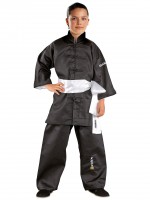 Kung Fu Uniform in Chinese style
Kung Fu Uniform in Chinese style
 Breaking board for children's training
Breaking board for children's training










